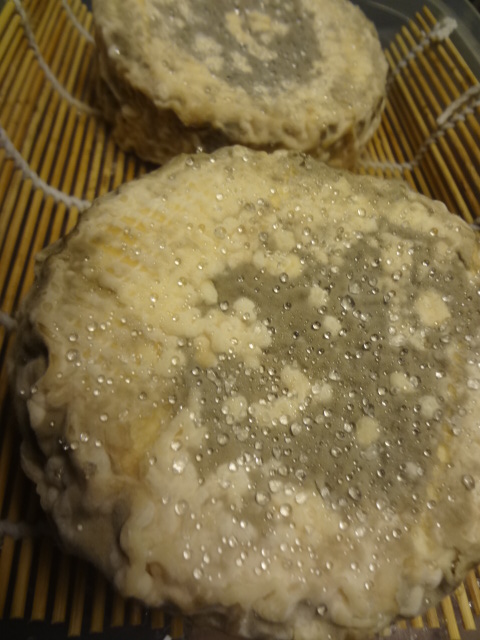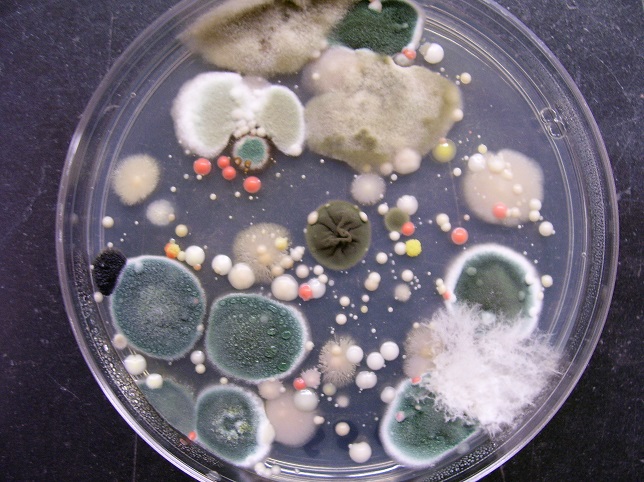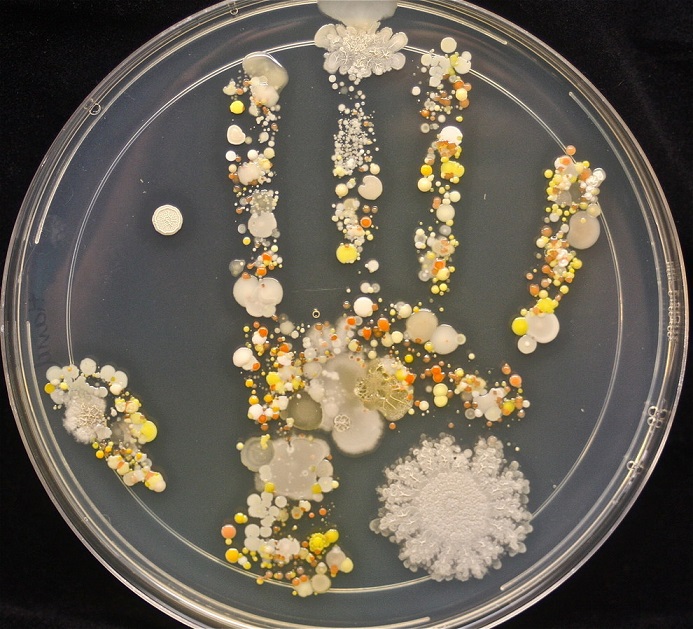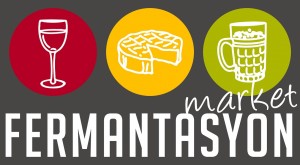Making cheese, wine and beer have a lot in common. Basically what you do is :
- Create an environment where the appropriate yeast or bacteria are happy.
- Introduce them to this environment, avoiding unwanted guests.
- Let them do the work.
By introducing yeast / bacteria you give them the chance to eat the nutrition before other bacteria have the chance to multiply.
Wine protects itself with acid and a high alcohol percentage.
Cheese protects itself with it’s acidity, some salt, and by forming a rind.
Beer protects itself with some acid, addition of hops, and some alcohol.
I have never had a problem with wine. It is very good in conserving itself.
Cheese can be a bit more of a “problem”.
Cheese can be made with different bacteria; B. Linens, P. Candidum, P. Roqueforti and Propionic bacteria.
The first 3 create a rind that protects the inside of the cheese. (Other cheeses form a rind created with salt removing the moist.) When you have different types of cheeses in your cheese cave, you also have these different bacteria next to each other. This will surely cause some problems.
 All these drops were formed where salt was applied at the cheese, dehydrating the rind.
All these drops were formed where salt was applied at the cheese, dehydrating the rind.
If you have a blue cheese and a white cheese next to each other the white will attack and take over the blue cheese. The P. Candidum that I use is more powerful than the P. Roqueforti. The result is that the blue will slowly disappear and the cheese will become white unless you clean it regularly. (Please tell me how.) This does not mean that the cheese is a complete failure (On the contrary most of the time) but it will not be what you expected.
The B. Linens prefers very wet conditions. In these conditions the other bacteria are not so happy and they will not be able to take over this cheese. Vice versa, B. Linens will not be able to take over from P. Candidum or P. Roqueforti because the cheeses are too dry.
(Yes, a child’s hand in a petri dish.)
The point is that a lot of things are happening in your house which you are not aware of.
Until you DO become aware of it.
I made a white beer some time ago. When I tasted it, it didn’t taste the way it should. It was acidic and tasted like lime. Something was wrong! I didn’t dislike it because it became something between beer and sparkling white wine. Nice and fresh. No problem, I will drink it.
But what had happened? I found the solution in a good beer book. It mentioned the fault as described above and mentioned that this could be caused by the Lactobacillus bacteria.
The WHAT bacteria? Yes, exactly. The bacteria that is used to make cheese! (Also found in buttermilk if you would want to try to add this bacteria to your beer.)
Apparently beer can be a good place for Lactobacillus. As a matter of fact some beer styles use it to sour the beer.
In Lambic no yeast is added for the fermentation. The brewers rely completely on the yeasts and bacteria in the brewery to ferment the beer. Of course there is a risk that the “wrong” yeast will ferment the beer, possibly causing defects as off flavors, or stuck fermentations. However when you always ferment your beer in the same place with success you can be more or less sure that the yeast / bacteria that you are looking for is there ready to invade the new wort. I guess this may not be the case in the amateur brewers’ house.
I would not try this with a whole batch myself because I have good yeast available but maybe it would be a nice experiment with a few liter. I am sure that my house contains lot’s of cheese bacteria, wine yeast and beer yeast. That makes me feel confident that the result will not be dangerous to drink. Maybe even tasting good.
Anyway the message is: Be aware. Cheese WILL attack beer!
Hans



